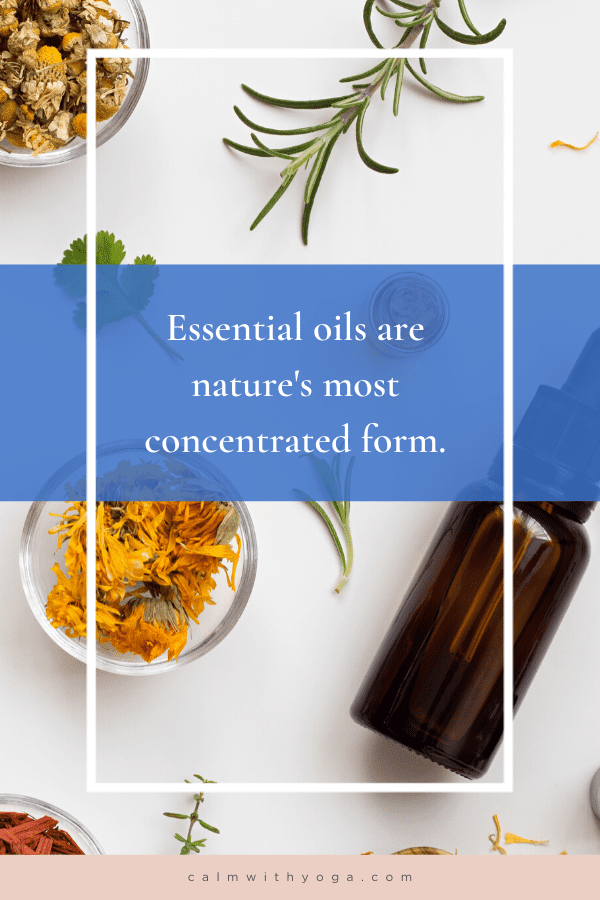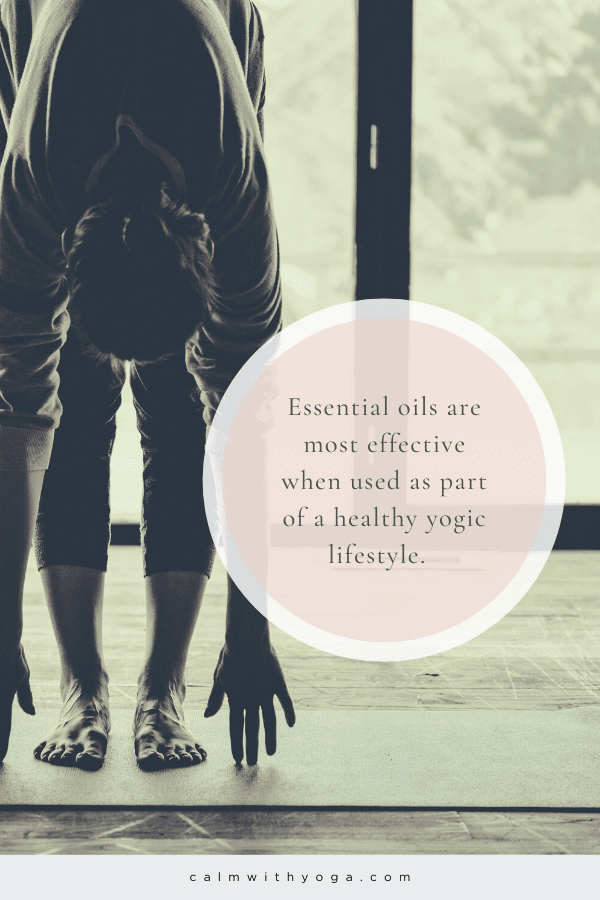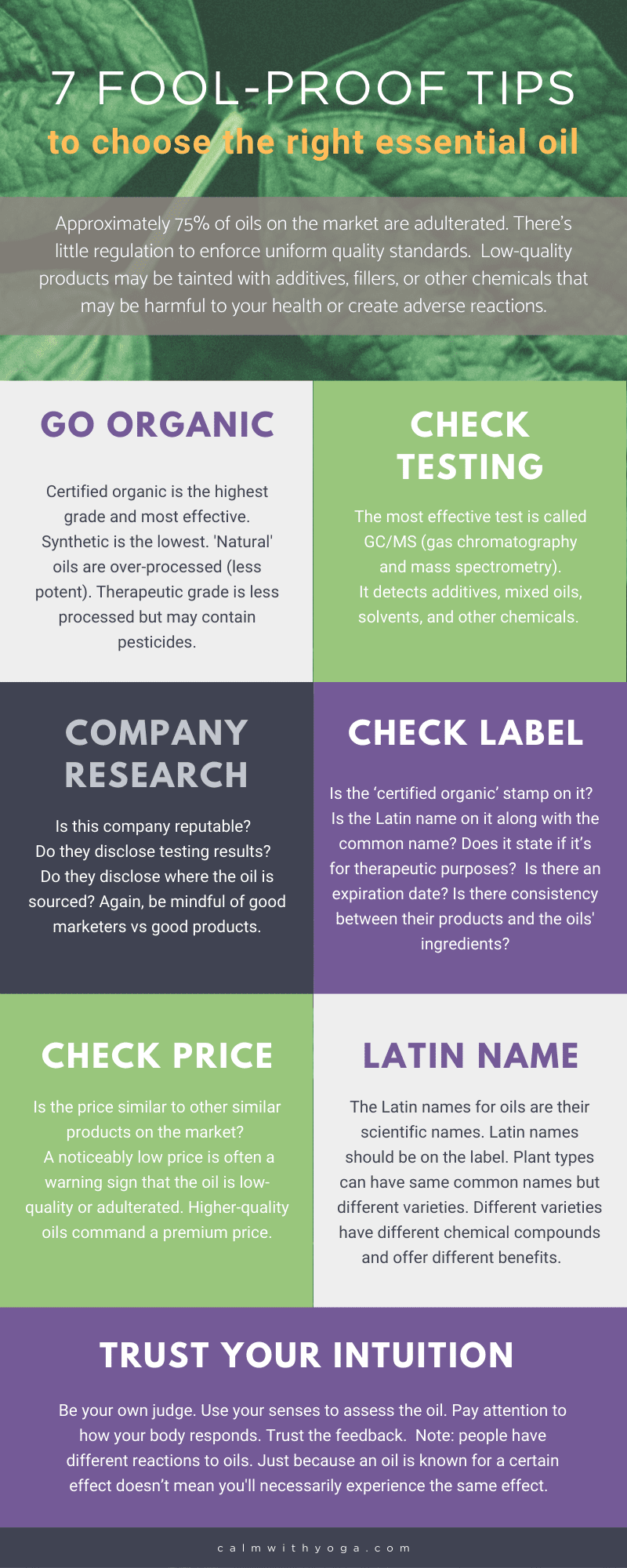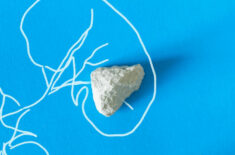Why People Are Turning To Essential Oils & Aromatherapy for Headache Pain
Throbbing. Pressure. Pain.
When those familiar sensations rear their ugly head (literally) you know it’s time to take action.
So what do you do?
Reach for the ibuprofen or acetaminophen?
Maybe.
These days, more and more people are reaching for essential oils instead.
It might seem like an unlikely choice, but for those who’ve experienced their healing power, it’s the natural first step.
Research in recent years has confirmed that essential oils (which are basicallyMother Nature’s concentrated liquids) are potentially effective natural remedies for a host of health conditions including headaches, migraines, sinus, and pain management.
Headaches are never fun, especially when they’re frequent.
And just ask anyone who suffers from migraine attacks and they’ll tell you just how much it impacts one’s quality of life and productivity.
And because the root causes of headaches are so varied, it’s sometimes hard to know specifically what to do to prevent or minimize future ones and their symptoms.
Headaches can be caused by:
- Unmanaged chronic stress and anxiety
- Dehydration
- Hormone fluctuations
- Alcohol consumption or withdrawal
- Low blood sugar
- Lack of sleep
- Allergies
- Caffeine withdrawal
- Withdrawal syndrome (drugs)
- Light sensitivity
- Vision changes
- Congestion/ sinus
How EOs work to Relieve Headaches
Essential oils (EOs) offer multiple health benefits and can increase wellness.
They can relieve muscle tension, stimulate blood flow (especially to the forehead/head), balance hormones (especially female), provide pain relief (analgesic), reduce inflammation, alleviate congestion and respiratory issues, improve sleep quality, act as calmatives and sedatives on the mind, mood, and nervous system.
EOs are highly concentrated aromatic compounds extracted from tree or plant material such as bark, leaves, flowers, roots, resin, fruit, or nut.
They’re considered a form of herbal medicine and holistic healing, and their therapeutic application is often referred to as aromatherapy.
Over 300 different active aromatic compounds are typically found in your average EO bottle. (1)
These compounds have pharmacological properties that influence almost every system, every organ, every cell in your body.
A few drops of EO is all you need to experience a potential effect on pain reduction.
The 7 Best Essential Oils For Headaches
Lavender oil
- Analgesic (pain reliever)
- Anti-inflammatory
- Vasodilator (dilates blood vessels to prevent muscle tension)
- Inhalation of lavender essential oil was found to be a possibly effective and safe treatment for the acute management of migraines according to a clinical trial published in European Neurology. (2)
Peppermint oil
- Analgesic (pain-relieving)
- Anti-inflammatory
- Its main active ingredient, menthol, creates a cooling effect that can soothe aches and pains
- Muscle relaxant
- Improves blood circulation
- Topical application of peppermint essential oil has been found to significantly reduce tension headache pain after just 15 minutes and effects lasting for over one hour. (3)
Chamomile oil
- Analgesic (pain reliever)
- Anti-inflammatory
- Sedative
- The topical application of chamomile essential oil (Matricaria chammomila l) may be effective at relieving migraine pain, though more research is needed. (4)
Eucalyptus oil
- Analgesic (pain reliever)
- Anti-inflammatory
- Its cooling effect can soothe aches and pains
- Muscle relaxant
- Improves blood circulation
- Opens nasal airways and can alleviate sinus pressure and sinus headaches
- Inhalation of eucalyptus essential oil has been shown to relieve pain (5)
Rosemary oil
- Analgesic (pain reliever)
- Improves circulation
- Relieves aches and pains
- Relieves congestion
- Rosemary essential oil (Rosmarinus officinalis) may have beneficial effects for headaches caused by withdrawal syndrome. (6)
Frankincense oil
- Analgesic (pain reliever)
- Anti-inflammatory
- Sedative
Tea tree oil
- Loosens tight muscles which makes it a good option for tension headaches
- Decongestant that may help with sinus headaches
Other potentially effective EOs for headaches are:
- Bergamot
- Marjoram
The Pros & Cons of EOs for Headaches
The Pros:
- EOs are potent – a little goes a long way. For example, did you know that 30 lbs of lavender flowers go into just one bottle? Just one drop offers multiple active compounds that can provide significant pain relief from tension-type headaches.
- Pure essential oils should be 100% natural. This means you have direct access to nature’s pharmacy and healing plant wisdom.
- If you use EOs mindfully and consume them with care, you’ll likely experience little to no side effects. (Unlike most pharmaceuticals.)
- Think of EOs as tools for preventative health care that’s relatively affordable and accessible. And unlike pharmaceuticals, you can blend multiple oils to maximize or enhance their headache-soothing effects.
The Cons:
- EOs are potent – unnecessarily high concentrations can cause them to become irritants and may even make headaches or tension worse.
- Unfortunately, there are many adulterated EO products out in the market that feature misleading claims and labels. It’s estimated that more than 75% of all EO on the market are either diluted or contaminated with synthetic material. (7)
- Even though EOs can provide headache symptom relief they aren’t cure-alls. (Note: If you’re experiencing severe or recurring headaches or sharp head pain please see your doctor immediately.)
- There are contraindications to be aware of for EO use. For example – eucalyptus shouldn’t be used if you have high blood pressure or suffer from epilepsy. Excessive use of this oil may actually cause headaches.
- More in-depth research is needed to explore EOs headache and migraine relieving abilities. Most studies have either been conducted on animals or rely on personal subjective experience which can skew results.
Using EOs With Other Natural Alternative Treatments & Preventative Care For Headaches
EOs work best when used as part of a well-rounded holistic plan that works to address the various potential causes of headaches.
Remember headaches are caused by:
- Unmanaged chronic stress and anxiety
- Dehydration
- Hormone fluctuations
- Alcohol consumption or withdrawal
- Low blood sugar
- Lack of sleep
- Caffeine withdrawal
- Withdrawal syndrome (drugs)
- Light sensitivity
- Vision changes
- Allergies
- Congestion/ sinus
So here’s what you can do to ensure you’re living healthy to prevent future ones (if possible):
- De-stress with yoga and meditation
- Hydrate – drink at least 1.5-2 liters of water daily
- Nourish yourself properly, keep stress at bay, and be well-rested in order to keep hormones balanced. (You may need to seek medical guidance if further action is needed here.)
- Significantly reduce alcohol consumption and supplement with activated charcoal and electrolytes if imbibing.
- Reduce the intake of excessive carbohydrates, sugars, and processed foods in order to keep blood sugar levels steady.
- Sleep an average of 6.5-8 hours a night, try this sleep meditation, and also use these essential oils for improved sleep quality.
- Use blue light blocking glasses and tools such as iPhone night mode and desktop app f.lux. This is especially useful at night.
- Get a comprehensive annual vision exam.
- Use these essential oils for allergies.
- Acupuncture and acupressure may help in some cases.
- Keep a headache log to determine possible triggers.
Psychosomatics:
Is it possible that there could be a mental/emotional link to your headache/migraine?
Psychosomatic illness refers to the way your emotions, thoughts, beliefs, and subconscious perceptions create a state of dis-ease and dis-comfort in the body.
If you want to take this one step further, Dr. John Demartini’s extensive research on ailments and perceptions offers further possibilities for finding relief.
He suggests the following factors may contribute to the condition: (8)
Headaches:
- A conflict between your body’s actions and your highest priority soul’s intuitive guidance.
- Self-criticism
- Invalidating yourself ad a result of this conflict
Migraines:
- Unrealistic expectations of the self or another to live outside their highest values
- High or over-demanding standards on the self or other (overworking)
- An internal conflict between what is expected or desired and what is actually happening
He offers the following new belief patterns and affirmations: (8)
Headaches & Migraines:
- I am grateful for my soul’s guidance and tune into its messages every day.
- I break down my soul’s purpose into daily action steps.
- I set realistic goals with realistic time frames.
- I see the divinity between actuality and reality.
- My body, mind, and soul are in harmony.
OTC (over-the-counter) medication:
Overuse or chronic use of pain-relievers like acetaminophen (aka paracetamol) or ibuprofen can lead to rebound headaches and other side effects.
It’s also important to remember that these medications are band-aids that mask symptoms but don’t address the root cause of the issue.
How To Choose High-Quality EOs for Headache Relief
Low-quality products may be tainted with additives, fillers, or other chemicals that may be harmful to your health and may exacerbate your headache.
Here are 7 fool-proof tips to help you:
1 – Look for certified organic therapeutic grade essential oils.
2 – Check that testing has been done.
3 – Research the company.
4 – Check the label.
5 – Check the price.
6 – Check the Latin name.
7 – Check in with yourself.
How To Use EOs For Headache & Migraine Relief – 3 Effective DIY Oil Blends
Here are three effective blends that act as a natural headache remedy. There are detailed instructions to help you feel better in no time based on the type of headache:
1. Tension headache
Roll-On Blend
- 7 drops Peppermint
- 7 drops Tea Tree
- 7 drops Eucalyptus
- 20 drops carrier oil (ie: fractionated coconut oil, jojoba oil)
Instructions:
Place all ingredients into the roller container and apply topically to temples, back of the head, neck, and shoulders.
Inhaler Blend
- 10 drops Peppermint
- 10 drops Tea Tree
- 10 drops Eucalyptus
Instructions:
Place all ingredients into the inhaler container and take slow, long, deep breaths.
Don’t forget to engage your lower belly.
This will help your nervous system calm down too.
You can use this quick, guided pranayama (yoga breathing) session.
Diffuser Blend
- 5 drops Peppermint
- 5 drops Tea Tree
- 5 drops Eucalyptus
- 200 ml water
Instructions:
Place all ingredients into the oil diffuser and take slow, long, deep breaths.
2. Migraine headache
Roll-On Blend
- 4 drops Peppermint
- 4 drops Roman Chamomile
- 3 drops Lavender
- 3 drops Frankincense
- 20 drops carrier oil (ie: fractionated coconut oil, jojoba oil)
Instructions:
Place all ingredients into the roller container and apply to temples, back of the head, neck, and shoulders.
Inhaler Blend
- 10 drops Peppermint
- 10 drops Roman Chamomile
- 5 drops Lavender
- 5 drops Frankincense
Instructions:
Place all ingredients into the inhaler container and take slow, long, deep breaths.
Don’t forget to engage your lower belly.
This will help your nervous system calm down too.
Diffuser Blend
- 5 drops Peppermint
- 5 drops Roman Chamomile
- 3 drops Lavender
- 3 drops Frankincense
- 200 ml water
Instructions:
Place all ingredients into the oil diffuser and take slow, long, deep breaths.
3. Sinus headache
Roll-On Blend
- 7 drops Rosemary
- 7 drops Eucalyptus
- 7 drops Tea Tree
- 20 drops carrier oil (ie: fractionated coconut oil, jojoba oil)
Instructions:
Place all ingredients into the roller container and apply to temples, forehead, and undereye.
Inhaler Blend
- 10 drops Rosemary
- 10 drops Eucalyptus
- 10 drops Tea Tree
Instructions:
Place all ingredients into the inhaler container and take slow, long, deep breaths or simply just breathe normally – the active molecules will still enter your body just the same.
Diffuser Blend
- 5 drops Rosemary
- 5 drops Eucalyptus
- 5 drops Tea Tree
- 200 ml water
Instructions:
Place all ingredients into the oil diffuser and take slow, long, deep breaths.
REFERENCES
:
(1) The Healing Power of Essential Oils, Eric Zielinski, D.C.
(2) Inhalation of lavender essential oil effective in the acute management of migraine headaches treatment of migraine headache: a placebo-controlled clinical trial. Sasannejad P, Saeedi M, Shoeibi A, Gorji A, Abbasi M, Foroughipour M. – https://www.ncbi.nlm.nih.gov/pubmed/22517298
(3) https://www.ncbi.nlm.nih.gov/pubmed/880511
(4) https://www.sciencedirect.com/science/article/abs/pii/S0306987714003077
(5) https://www.ncbi.nlm.nih.gov/pmc/articles/PMC3703330/
(6) https://www.ncbi.nlm.nih.gov/pmc/articles/PMC3905473/
(7) Essential Oils Revolution Online Summit, Interview with Robert Pappas, “Essential Oil Preparation”
(8) The Prophecy II Experience, John Demartini, p 179


















